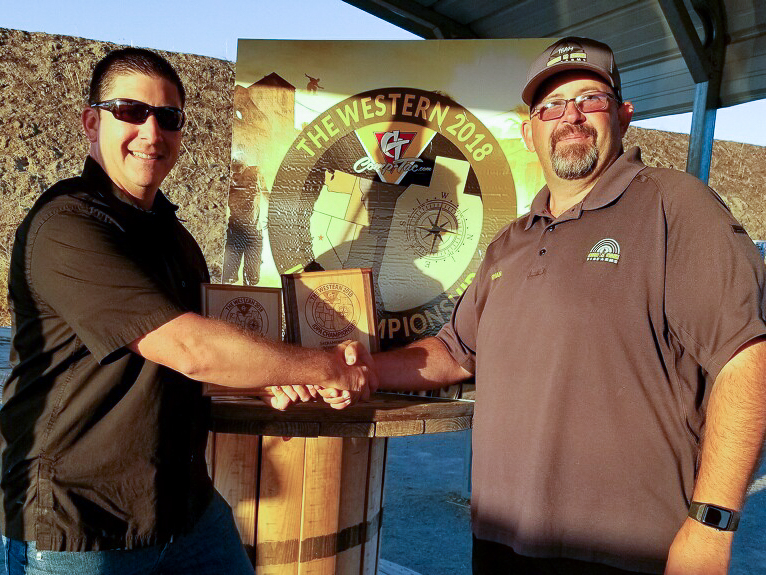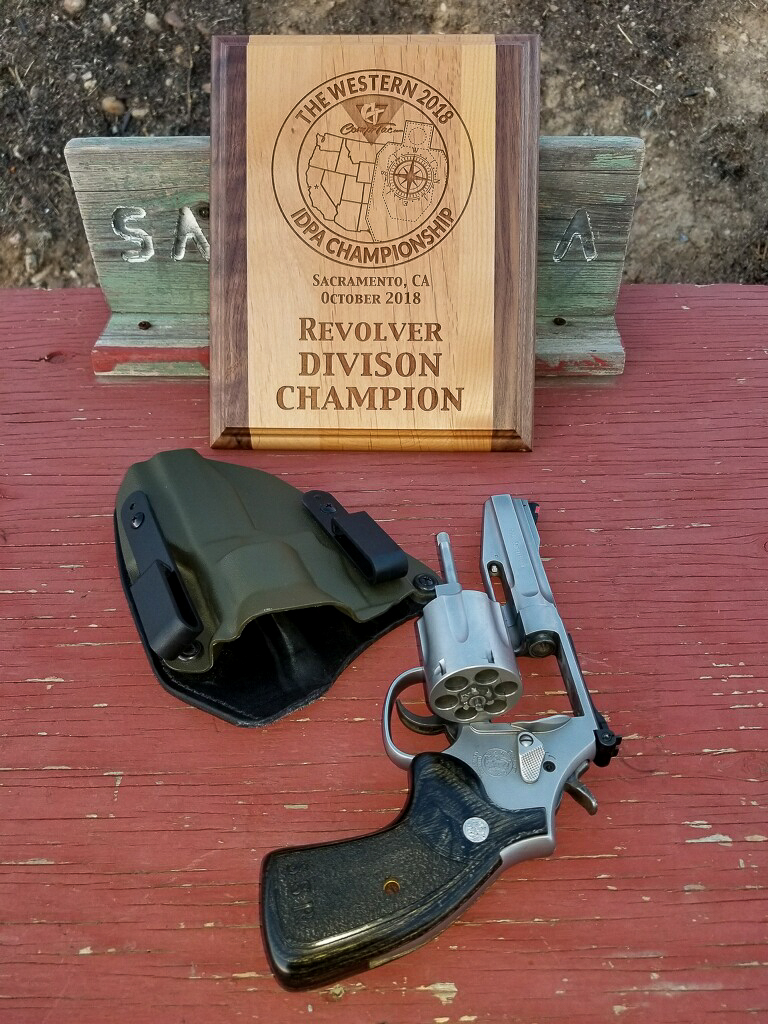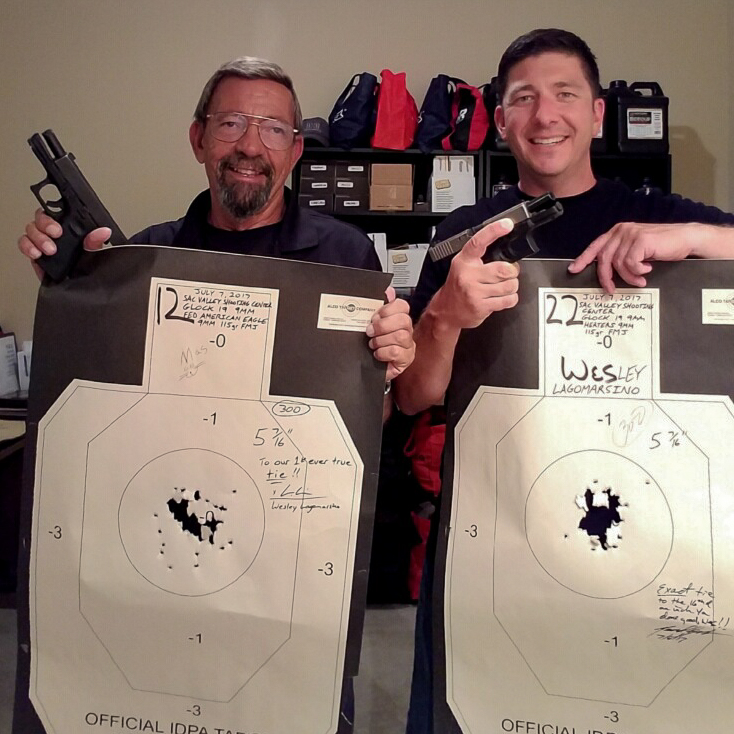
I’d like to congratulate one of my advanced graduates and class hosts, Wes Lagomarsino, who just won the stock service revolver champion title at the Western Championships of IDPA, the International Defensive Pistol Association.

I encourage all my students to give IDPA a try (www.idpa.com). It’s the “concealed carry sport,” and an excellent environment for skill testing. In addition to me, Wes also hosts national IDPA champ Mike Seeklander, an awesome instructor, every year. Mike had also told Wes he needed to get into competition, and I’m glad he finally listened!
Wes is an excellent instructor in his own right, and it’s always a pleasure teaching with him as a guest instructor at his school in California, Lagomarsino’s Firearms Institute. I’ll be doing a MAG-40 class with him next month in Sacramento. We still have a few openings. Info on that and Wes’ own classes can be found here.



Some people have way too much fun at work. Isn’t it wonderful?
Congratulations to both.
Remember that you and Russ tied in August, too.
Congrats – a teacher is only as good as their students’ accomplishment – at least that’s a dang good indicator !!
So he now has “LFI” classes? ?
Best wishes to you both
Mas, I have only competed in Steel Challenge matches so I never understood how you guys score targets where the performance evidence is basically one golf ball sized hole in the center of the target. How does one know there was not even one single round pulled completely off the cardboard? I realize that at the championship level it could be said “what are the chances this guy could miss that badly?”, but still.
Wes usually carries at 3:30.
Roger, the targets you see in the picture above are paper practice targets. In an actual match, the targets are cardboard, and the holes are covered by “pasters” – small squares that are sticky on one side and colored like the target on the other – after each shooter goes through the stage.
CONGRATULATIONS, indeed! With an IWB to boot. WOW.
Curious to know his orientation of the holster? Ask because I use IWB as well in IDPA and find reaching all the way to my 5:30 position, just at the sciatica notch, takes time vs when I compete using an OWB at the IDPA “rule book” position. None-the-less, a job well done!!!
Congrats Mas, glad to see you teaching in Cali despite all the crap there that we all know about. Good choice for pistols as well!
Here’s a question you may hear often.
I’m considering attending one of your classes. but I live in NYS and worry about how I can transport a gun from my state to a state where I’m not licensed and back again.
What advice can you offer?
Will email you, since it depends on what states you’re talking about.
Thanks.
It may be FL or NC.
I have watched a lot of IDPA competitions and see the value in their developing speed and accuracy, but have not competed. I do often practice along the lines of competition, though, I just don’t have someone else time me. I like to practice according to my arsenal. I still most often carry a compact, fully loaded, spur-less .357 revolver for primary presentation, and a very compact, .25 ACP, semi-auto, single-action mouse gun in Condition 3 for back-up. I just like the combined readiness, safety, simplicity, and awesome power of the right .357 loads for quick emergencies. The .25 ACP mouse gun depends almost entirely on accuracy for effectiveness, but that is not all bad. You never know when a mouse will attack, either. Just kidding! Rats, definitely. I would like to find a yet very slim, compact .25 ACP with a 3.5-inch barrel for greater velocity, and more pinpoint shots. I prefer to carry two firearms, for in a fight two are one, and one is none, and Murphy always seems to be lurking in the shadows. Boy, have I seen a lot of semi-autos stop running in IDPA, but I have yet to see a revolver with quality ammo hang fire, or even misfire.
Comments are closed.